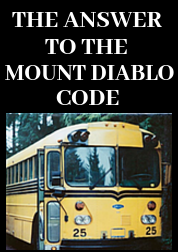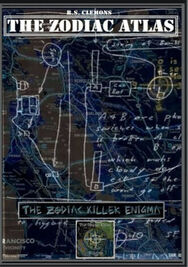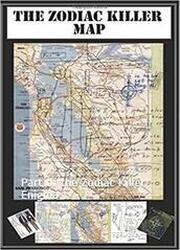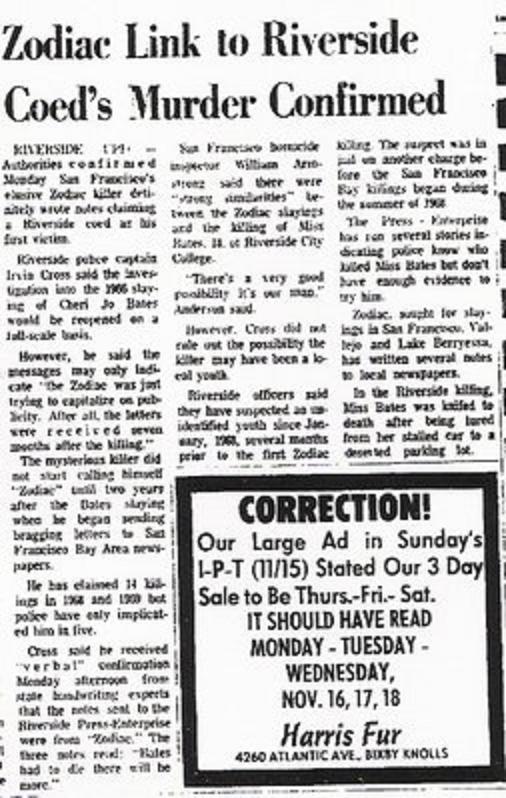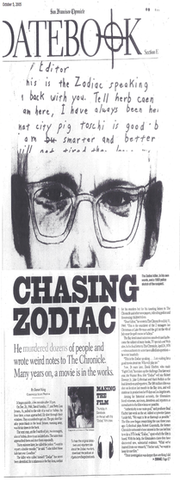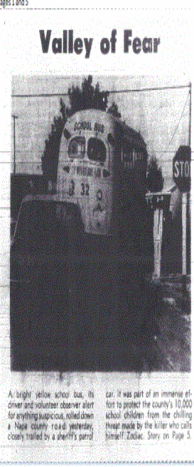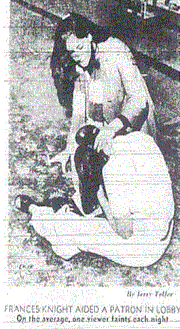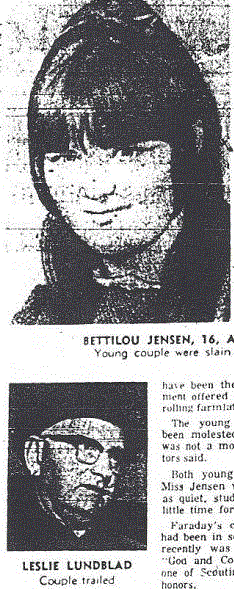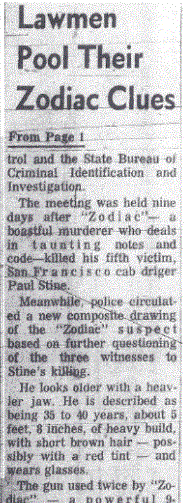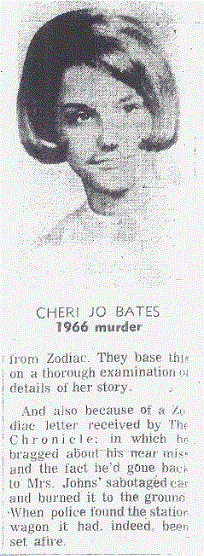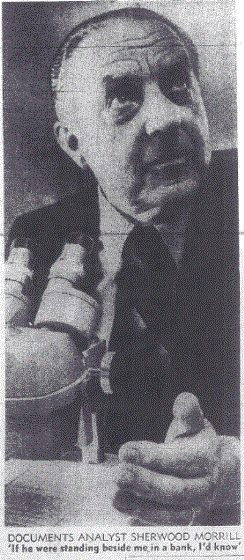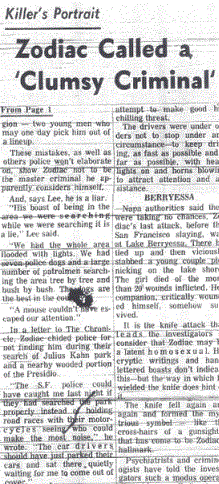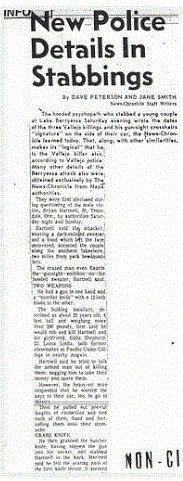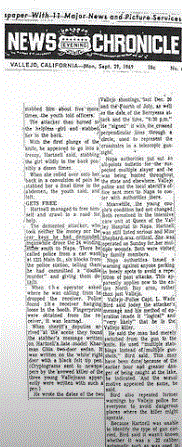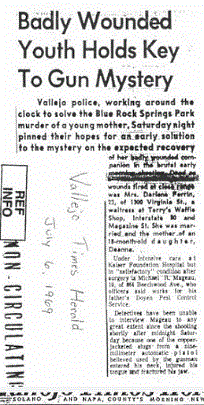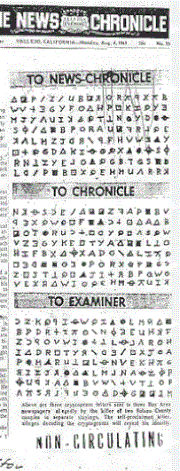
Two eyewitnesses placed Cheri Jo Bates' lime green Volkswagen Beetle in the vicinity of Terracina Drive at around 6:15 pm, where it was ultimately found unlocked the following day. However, a young Mexican-American student said he knew Cheri Jo Bates and had noticed her in the library the night in question. He said he saw the girl "writing something with a ball point pen in her blue spiral school notebook." The boy told us he was outside about 5:30 pm, waiting for the library to open at 6, and it was then he saw the girl. Sergeant Gren said "he seems to have a very good memory." Other students who were acquainted with Cheri Jo said they were in the library between 6:30 pm and 6:40 pm, and did not see the girl during that time. Walter Siebert of 3667 Gloreen Court, who attended the library that evening, stated that he and a few friends were in the library from 7:15 pm until 9, but did not see Miss Bates, whom they all knew.
The Mexican-American student appeared to have good recollection, detailing her writing in a blue spiral notebook, further corroborated by the fact that her 'abandoned' Volkswagen Beetle had three library books neatly stacked on the front passenger seat. Dismissing the idea that a third party withdrew her library books - and taking into account the Mexican-American eyewitness, and two other eyewitnesses that saw her at approximately 6:15 pm - it seems evident that Cheri Jo Bates had entered the library shortly after it had opened and had left prior to 6:30 pm. But this is where it gets confusing. The 'Inside Detective' Magazine stated 'Detectives interrogated four young men who said they had seen Cheri Jo near her car the previous night.' But it did not go into any further detail. A newspaper article, however, would add the crucial information we require and expand the testimony of Walter Siebert.

In recap, Cheri Jo Bates arrived at Terracina Drive at around 6:15 pm and entered the library to collect her library books, and left before her earliest friends arrived at 6:30 pm. This is presumably when her Volkswagen Beetle was disabled by the the eventual assailant. But we have a major problem. The four workmen spotted Cheri Jo Bates by her vehicle. This could only be when she left her vehicle (and when the murderer disabled it) or when she returned (and when the murderer offered her assistance). However, the four workmen never mentioned a second person around her vehicle that evening, or anybody tampering with her car. These are the same four workmen spotted by Walter Siebert & Co at 7:15 pm. The workmen were likely sitting opposite her vehicle anywhere from 45-60 minutes, but do not recall anything suspicious. If Cheri Jo Bates was attacked shortly after discovering her vehicle disabled, surely any commotion or screams in the alley, approximately 200 feet away would have been heard.
This presents us with a major problem. It would mean that her vehicle was likely disabled before the workmen sat on the fence, or after they left the fence - sometime after 7:15 pm, when Walter Siebert & Co spotted them. One possible timeline, is Cheri Jo Bates arrived circa 6:15 pm and entered the library. The assailant then disabled her vehicle at around 6:18 pm. The workmen arrived at 6.22 pm, and only saw Cheri Jo Bates on her arrival back from the library. The problem here is that the assailant could not have been waiting to assist her, because the workmen saw no second person, and failed to mention anything about car trouble to investigators. Another alternative, is that Cheri Jo Bates left the library and met her eventual murderer outside the library and did not return immediately to her stricken vehicle, but instead went to a secondary location, upwards of one hour with the unknown man. The workmen, who were sitting alongside Terracina Drive until at least 7:15 pm heard nothing unusual, so it is unlikely she was murdered in the alleyway prior to 7:15 pm. We assume she was the one who placed her library books on the front passenger seat, rolled down the windows and placed the car key in the ignition. If this were the case, then it had to be subsequent to 7:15 pm.
This may be suggestive of a killer that knew Cheri Jo Bates, as suspected by the Riverside Police Department: 'Detectives learned from the slain girl's friends that Cheri Jo had been "terribly afraid of the darkness." This information led investigators to believe that Cheri Jo had known her killer and unsuspectedly accompanied him to her death' - and may have been followed to the library. It may also suggest that the author of the 'Confession' letter is either a hoaxer, or he is trying to throw police a curveball on the timeline.
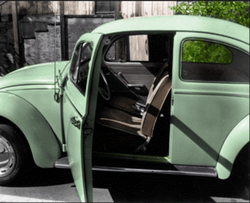
One man meets Cheri Jo Bates and lures her away from the library for a period of time, while the accomplice disables her vehicle. However, this presents further problems. The accomplice noticing four workmen opposite Cheri Jo Bates vehicle cannot disable her car until they leave, sometime after 7:15 pm. If these workmen were an unforseen circumstance, then he is 'lucky' he is able to disable the vehicle before Cheri Jo Bates and his partner in crime return. If we assume the 'single killer' hypothesis, then we are back to square one.
Did a single assailant kill Cheri Jo Bates in the alleyway sometime after 7:15 pm, gather her keys and books, return to her vehicle and place everything in situ, disable her vehicle, and make it appear like she returned to her vehicle immediately after leaving the library? Coupled with the 'Confession' letter, it may deflect the investigation. This may seem a possibility, until you consider the windows of the Volkswagen Beetle were rolled down - a needless extra - if you were concocting a crime scene.
Taking everything into consideration, when did the murderer tamper with the distributor wire?
The 'Confession' letter stated "I first cut the middle wire from the distributor. Then I waited for her in the library and followed her out after about two minutes. The battery must have been about dead by then. I then offered to help. She was then very willing to talk to me. I told her that my car was down the street and that I would give her a lift home. When we were away from the library walking, I said it was about time she asked me, "about time for what ?". I said it was about time for her to die" - which according to all we know, is seemingly wide of the mark - and flies in the face of all the eyewitness testimony.




 RSS Feed
RSS Feed

